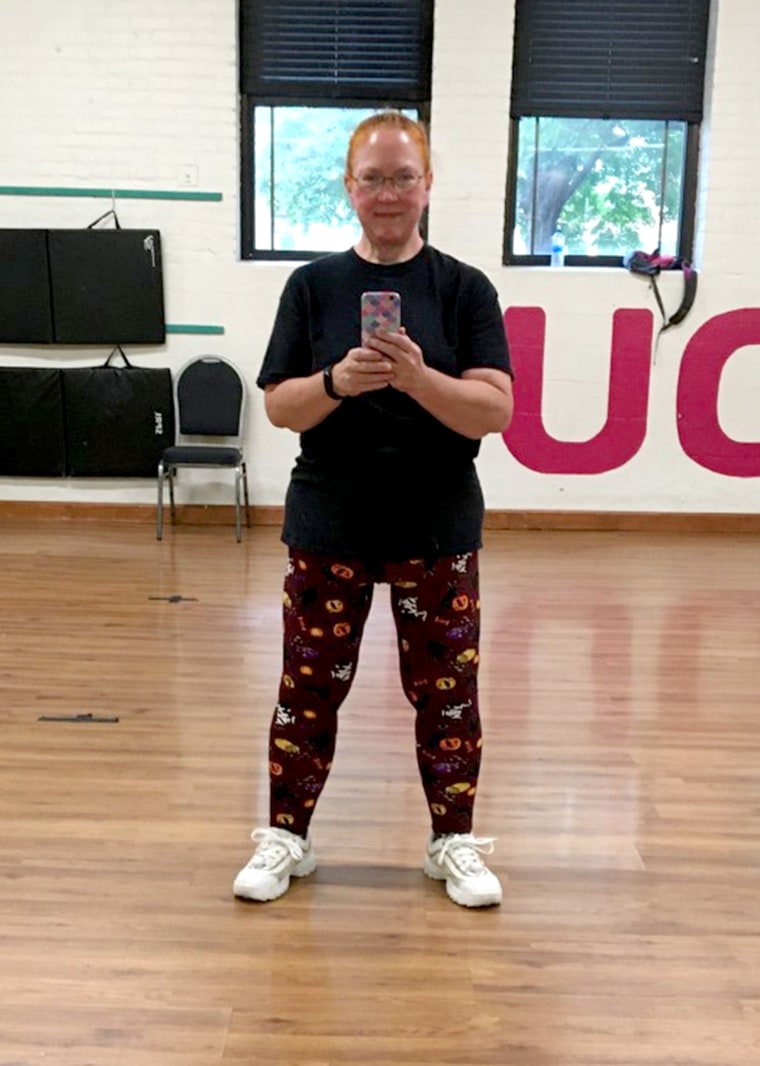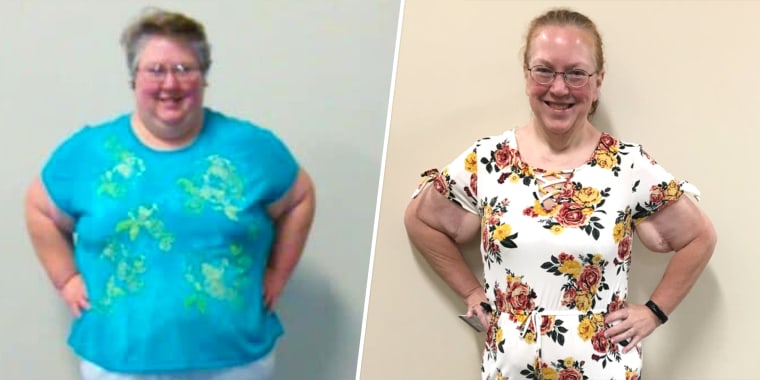With a family history of heart disease and stroke, and her own health problems growing, Sheryl Bader knew she had to lose weight.
She had reached 365 pounds on a 5-foot-3-inch frame, developing Type 2 diabetes, sleep apnea and high blood pressure. She had psoriatic arthritis and the extra weight added to the aches and pains of her joints.
All the health issues gave Bader plenty of motivation to slim down, but no matter how hard she tried, she could not lose enough weight and keep it off, she said. That’s when her physicians began suggesting bariatric surgery.
“My primary care doctor had mentioned it a couple different times. I’m like, ‘No, I don’t want to go down that route. That’s the easy way out,’” Bader, 51, who lives in Boonville, Missouri, told TODAY about her perspective at the time.
“At this point, I know that is not the easy way out. I really think there’s a big stigma about it, too… (but) it’s a tool to help you lose weight.”
‘How did I get to this point?’
Bader had been overweight since she was a child, recalling that she has “always been the bigger person.” She weighed 170 pounds in junior high, when everybody else weighed 98 pounds, she said, blaming a mix of genetics, lack of exercise and emotional eating. The hospital worker continued to gain weight as an adult.
“My go-to food was anything and everything. I liked sweets, I liked salty — just food in general. I love to cook, so that makes it hard. You’re trying new recipes,” Bader said.

She had tried most every popular diet over the years, but nothing worked long-term. Seeing 365 pounds on the scale astonished her.
“It was unreal that I’ve ever gotten that big. It was just like, how did I get to this point?” she recalled.
Bader started considering bariatric surgery after she had to undergo two operations on her knee. Her doctor told her she’d eventually require a knee replacement, but needed to lose at least 100 pounds first. Try as she might, she couldn’t do it.
The surgery
In October 2019, Bader underwent a Roux-en-Y gastric bypass at University of Missouri Health Care, where she also works as a patient account representative.
The surgery involved dividing her stomach into a smaller top portion — a pouch that’s about the size of an egg — while bypassing the larger part so it no longer stored or digested food, according to the American Society for Metabolic and Bariatric Surgery.
The pouch holds less food, so fewer calories are ingested. This and other changes triggered by the surgery have a “profound effect” on decreasing hunger, resulting in reliable and long-lasting weight loss, the group noted.
Bader spent two nights in the hospital and was back to work within a week.
A new way of eating
At first, Bader could only ingest liquids and soft foods. Over eight weeks, she slowly implemented other foods back into her diet, and that slow diet progression “was the hardest part of the whole thing,” she recalled.
More than two years later, her routine is set. She’s able to eat only small portions of food — up to a cup at a time — so she prioritizes eating protein first because it’s key to keeping muscle mass while losing fat.
With her small stomach pouch, “you want to make sure get your protein in before you fill up on everything else,” Bader said. Carb intake is limited.
She tries to eat completely sugar-free; otherwise, she’s at risk for dumping syndrome, or feeling sick after eating sweets. Drinks with bubbles are off the menu, too, because they can blow up the small stomach and cause gas pains.
Bader must avoid foods with hard seeds or shells, like those found in certain fruits or popcorn, because they can clog up the artificial opening between her stomach and her intestines.
The surgery affects how a person digests and metabolizes alcohol, so just a couple sips of wine now affect Bader as much as a glass of wine would have before the gastric bypass, she said. There’s also a limited amount of caffeine she can have in a day because the acidity can affect her much-smaller stomach. It’s crucial to follow the correct diet plan, Bader noted.
“When you eat things you shouldn’t or do things you shouldn’t, that’s when you start having problems,” she said.
Losing weight
Bader lost 25 pounds in the first month after her surgery and kept shedding weight. In all, she has lost 189 pounds and now weighs 176. She no longer struggles with Type 2 diabetes, her blood pressure is normal and her sleep apnea is gone.
She once loathed to exercise, but now works out most days a week. Her favorite classes are dance fitness and cardio-strength.

“My joints rarely hurt now. I feel great, I have more energy, I am more outgoing. I have had depression and anxiety for years and those have subsided,” Bader said.
“Part of that is with the exercise — the good endorphins it releases. It helps with your mental health. Because I’ve lost the weight, I can exercise more, and because I exercise more, I can lose more weight. It’s a nice little circle.”
Working out is now such a passion that Bader has become a certified group fitness instructor and works as a substitute teacher at her gym.
She's convinced the surgery was a life-saving option that helped her get her health back on track.

